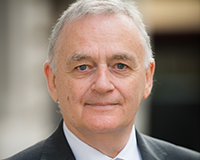 Last Monday, Ben Habib of First Property Group announced £1m profit had been generated on the sale of an office park in Uxbridge, west London, by his Permitted Development Rights fund. Eight blocks totalling 70,000 sq ft will be converted into 140 flats.
Last Monday, Ben Habib of First Property Group announced £1m profit had been generated on the sale of an office park in Uxbridge, west London, by his Permitted Development Rights fund. Eight blocks totalling 70,000 sq ft will be converted into 140 flats.
Habib’s PDR fund has bought eight sub-prime office sites since 2012 for a total of £30m. All are now sold, for £56m, permitting the building of 655 units. These numbers demonstrate why this three-year free-market experiment permitting the conversion of offices into homes without state permission has galvanised developers. Yet this potent catalyst for generating new homes is still slated to fizzle out next spring. Why?
Communities secretary Greg Clark only needs to look at his constituency of Tunbridge Wells in Kent to see how converting ageing office blocks to flats would enliven the town. His predecessor Eric Pickles pledged in April 2014 to extend the PDR regime beyond May 2016. Then, just before the election, Pickles backtracked, citing “concern over the future availability of business premises”.
Clark was on the verge of issuing a circular last month which would have strengthened PDR and banned councils from opting out. A pronouncement is expected in the autumn. Surely only one conclusion can be reached by a now untrammelled Tory administration: let the free market decide.
It pays to stick with Savills
What value can you put on client relationships? Precisely £7m, if you are Smiths Gore. What value can you put on goodwill? Exactly £19.2m, if you are Smiths Gore. The 530-strong rural agent was sold to Savills on 31 May for £34.2m, meaning £26.2m of the purchase price consists of intangible assets, according to disclosures made by Savills in its starry half-year figures, published last week.
What price has Savills put on retaining Smiths Gore partners and key staff? “Up to £4.2m is also payable to certain key staff, salaried partners and fixed-share partners by the third anniversary of completion, subject to them being actively engaged in the business.”
Savills has so far handed over £16m in cash. The remainder will be doled out over the next five years, if performance targets are met. Members of the Smiths Gore brigade at Savills will be praying that the economic sun shines until 2020.
The Carroll conspiracy
Remember Gerald Carroll? No? The 64-year-old Anglo-Irish business magnate developed the Galleria mall in Hatfield, Hertfordshire, in the early 1990s, and once owned Farnborough Airport in Hampshire. In 1995, Carroll went bust, claiming an establishment conspiracy had deprived him of what the Mail on Sunday called in 2000 his “mysteriously vanishing £500m worldwide business empire”.
Fifteen years on and the story has not gone away. A Sky News video of Carroll featuring a younger (and thinner) Adam Boulton was re-circulated on YouTube in May this year. “This is beyond doubt the biggest financial fraud heist in British history,” asserts Carroll in the three-minute clip.
Those with an hour or more to browse the topic might begin with the website of the Carroll Foundation Trust, which was updated as recently as this month. There are unexplained pictures of the crowned heads of Europe, past and present, plus allegations against lesser folk. These cannot be reprinted, as they are made against still very much alive law firms.
Clouds over Europe
Another gloomy missive from Joe Valente. On 20 June, the European head of research for real estate at JP Morgan Asset Management warned of a downturn in the UK market. Now he is warning clients to beware of prices on the continent.
He said: “Investment transaction levels are up by 55% in Italy, 60% in Ireland and 150% in both Portugal and Spain. The resulting compression of property yields to levels either in-line with, or below, their pre-crisis levels suggests that investors have not only lowered risk premia but are beginning to increase rental growth estimates to levels that are hard to justify by property market fundamentals.”
Careful now.










